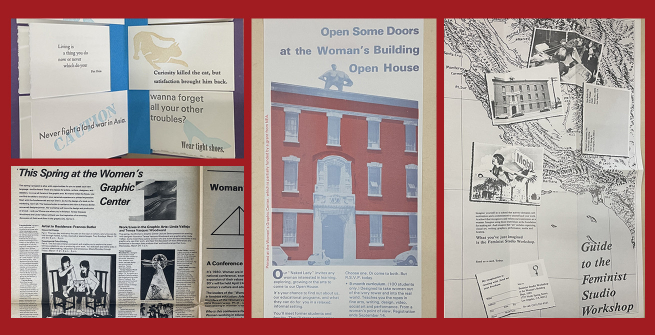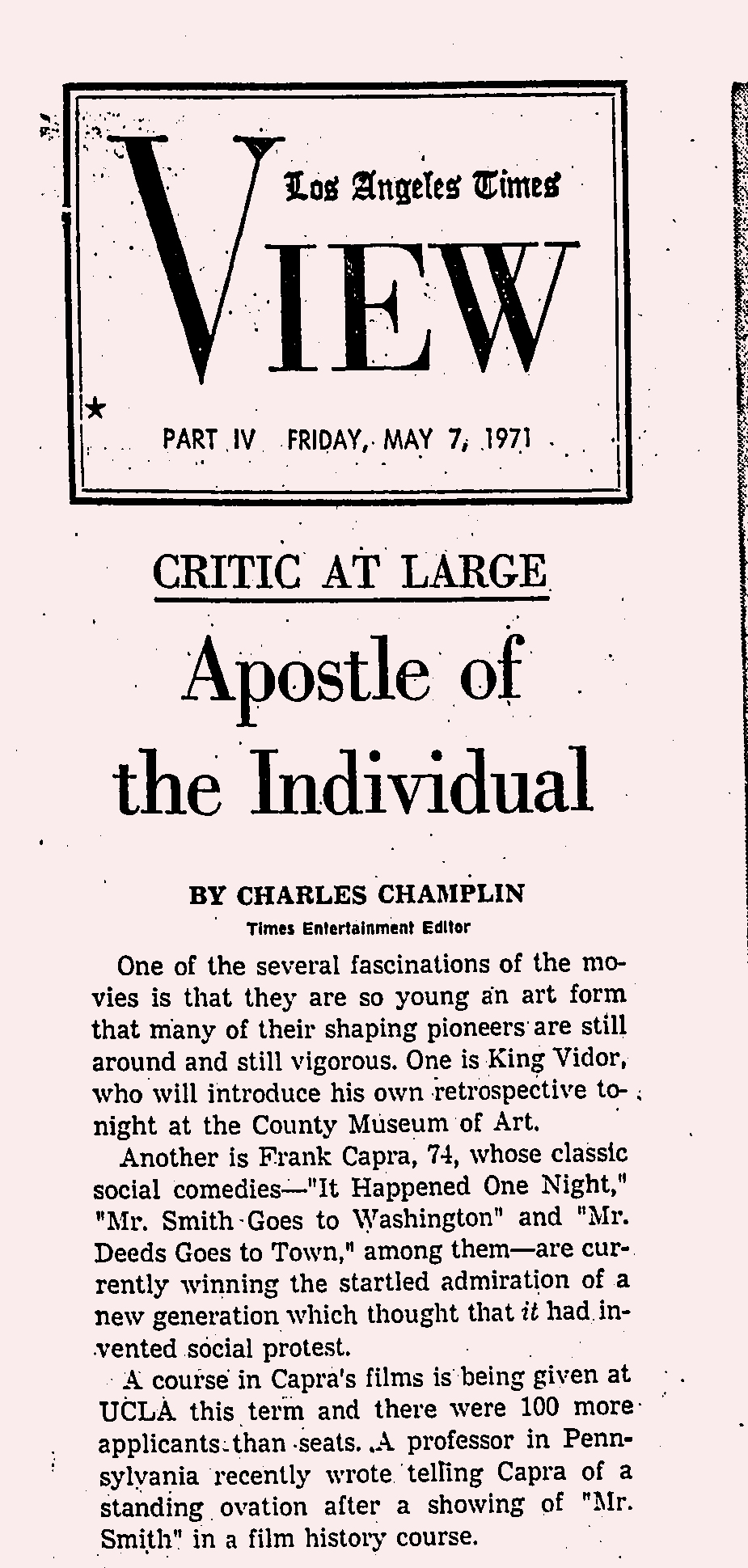In 1970, "Art and Technology," a group exhibition at the Los Angeles County Museum of Art (LACMA), had no women artists included. As a reaction to this, the Los Angeles Council of Women Artists researched that between 1961 through 1971, even though women represented 53% of the population in Los Angeles, only 4% of works shown in group shows at LACMA were that of women. As part of that zeitgeist, artist Judy Chicago, graphic designer Sheila Levrant de Bretteville and art historian Arlene Raven, experiencing frustration in creating a supportive feminist education environment, decided to start an independent school for women artists.
In 1973, these founders established the Woman's Building, a non-profit alternative education center that organized, sponsored, and fostered programs, activities, and groups in the old Chouinard Art Institute (1921-1961) building on Grandview and later, in 1975, moved to the edge of Chinatown on Spring Street. (Chouinard joined with the Los Angeles Conservatory of Music in 1961 to become CalArts in Santa Clarita.) The Woman's Building stood as a counterpoint to major museums, galleries, and teaching spaces that (were unintentionally or intentionally patriarchal) excluded female artists. The building included a gallery, artists' studio, performance, and teaching spaces. In its 18-year history (1973-1991), the space brought together women from throughout the United States and the world and served as a gathering space for painters, printers, graphic designers, performance artists, video artists, and writers.

The Woman's Building hosted many programs within its doors, including the Feminist Studio Workshop (the inaugural group), Center for Art and Historical Studies, Los Angeles Women's Video Center, Women's Writer Program, and most importantly, for this blog series, Women's Graphic Center. The Women's Graphic Center (WGC) was both an educational and community studio space where artists could take classes and rent studio time to create books, posters, and other printed ephemera.
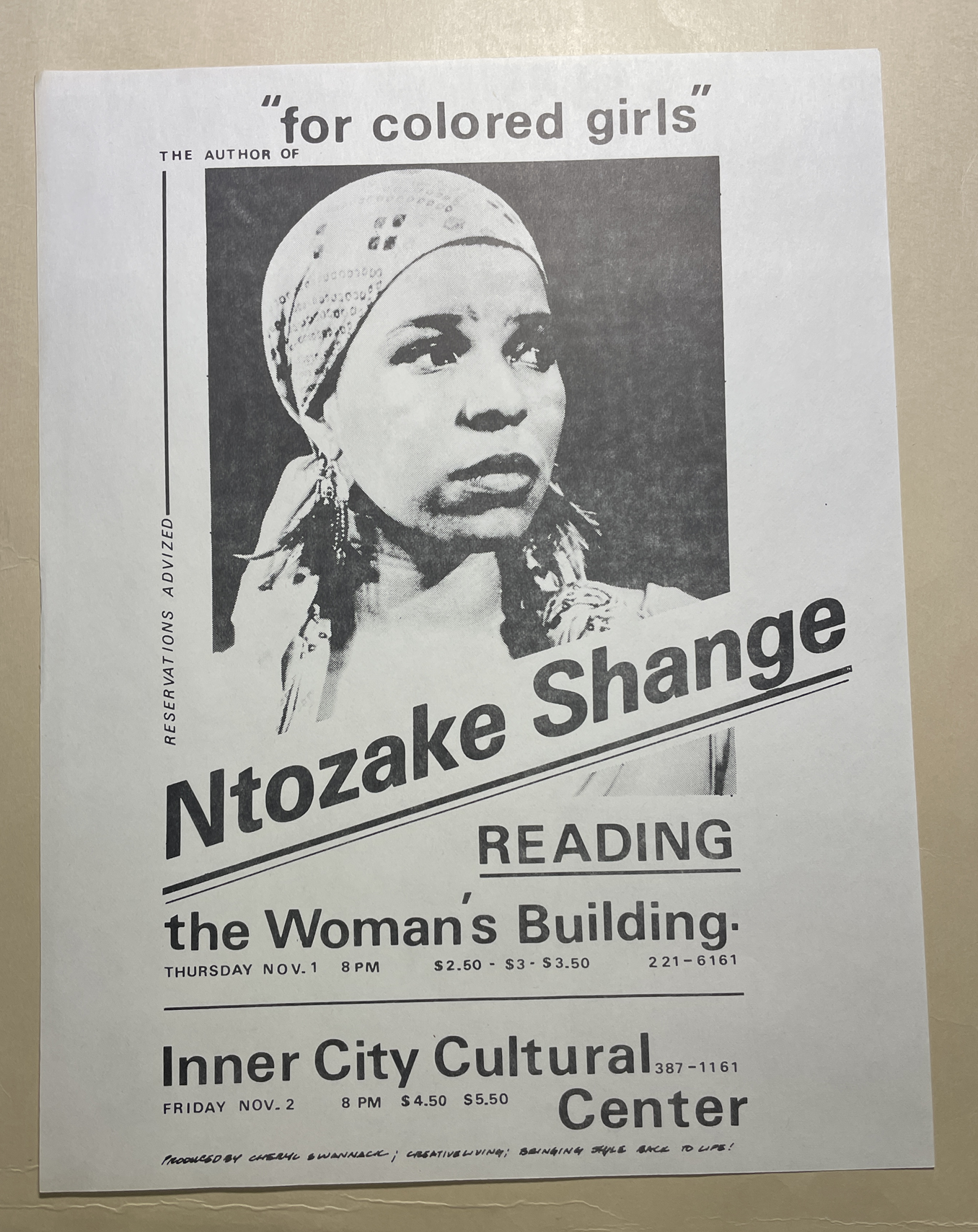
The WGC had an extensive roster of equipment, including an offset press, letterpress machines, offset plate-making equipment, a darkroom, and space to do screen printing. Artists who used the space could effectively print a book from start to finish; they could conceive, write, design, print, and bind their books. WGC was based on this ethos that the ability to publish and distribute artists' own printed works allows their own voices to be heard through having control over production and distribution.
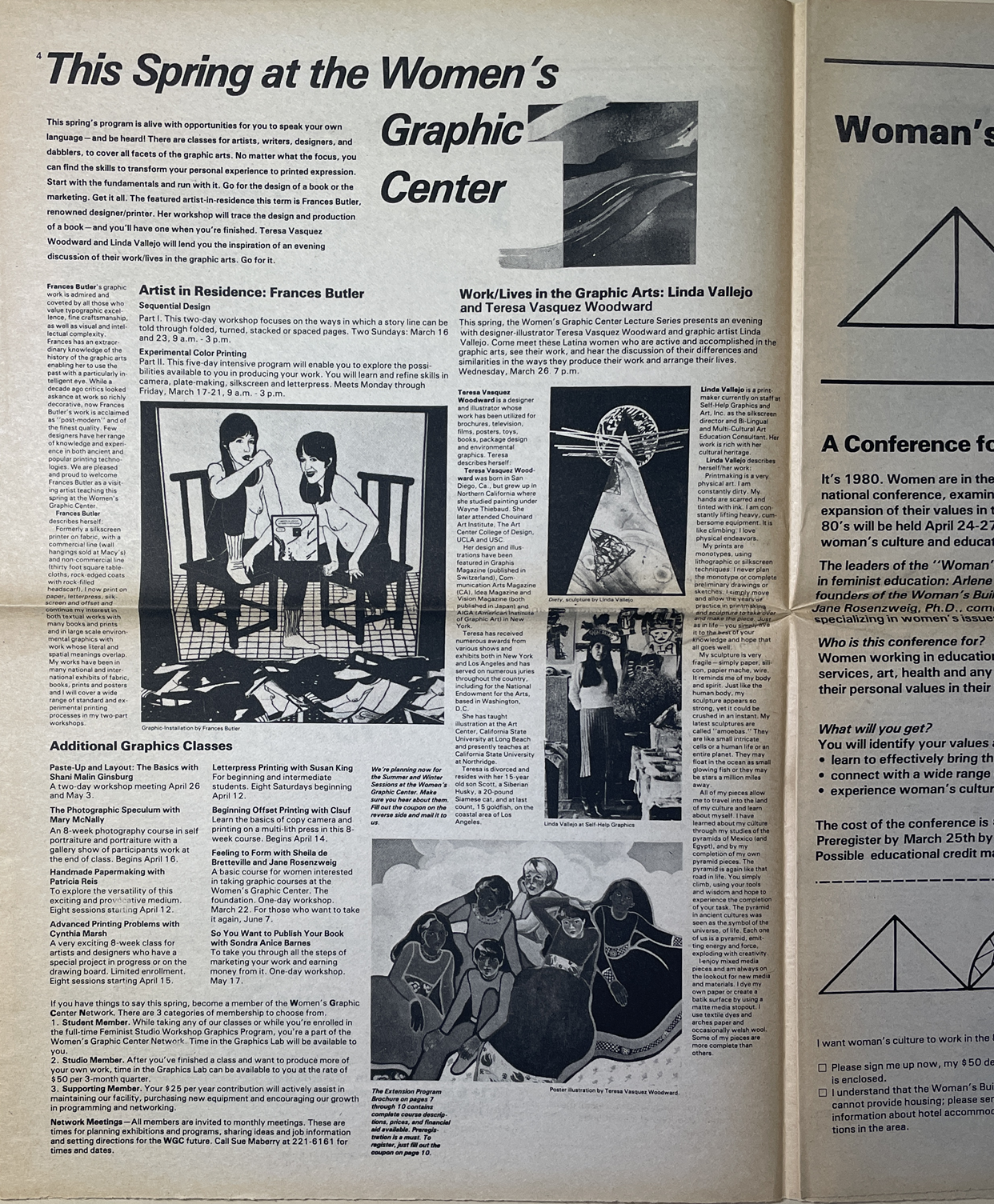
This is the final installment of book treasures in the Special Collections and below will be a list of materials to look at to explore more about the Woman's Building. This bibliophile exploration of the holdings of Special Collections has been important to show through history how the printed word and the technology of printing have been an integral part and representative of social change: first with Gutenberg, then with the Arts and Crafts Movement with William Morris, with avant-garde movements such as Dada and Surrealism, and here, with feminism through the Woman's Building. It has been shown repeatedly in this series how vital it is for communities to have the ability to create their vision and then have their voices heard. This ability to share thoughts is the power of the printed word, the raison d’être for books, and, more significantly, why artists' books are made.
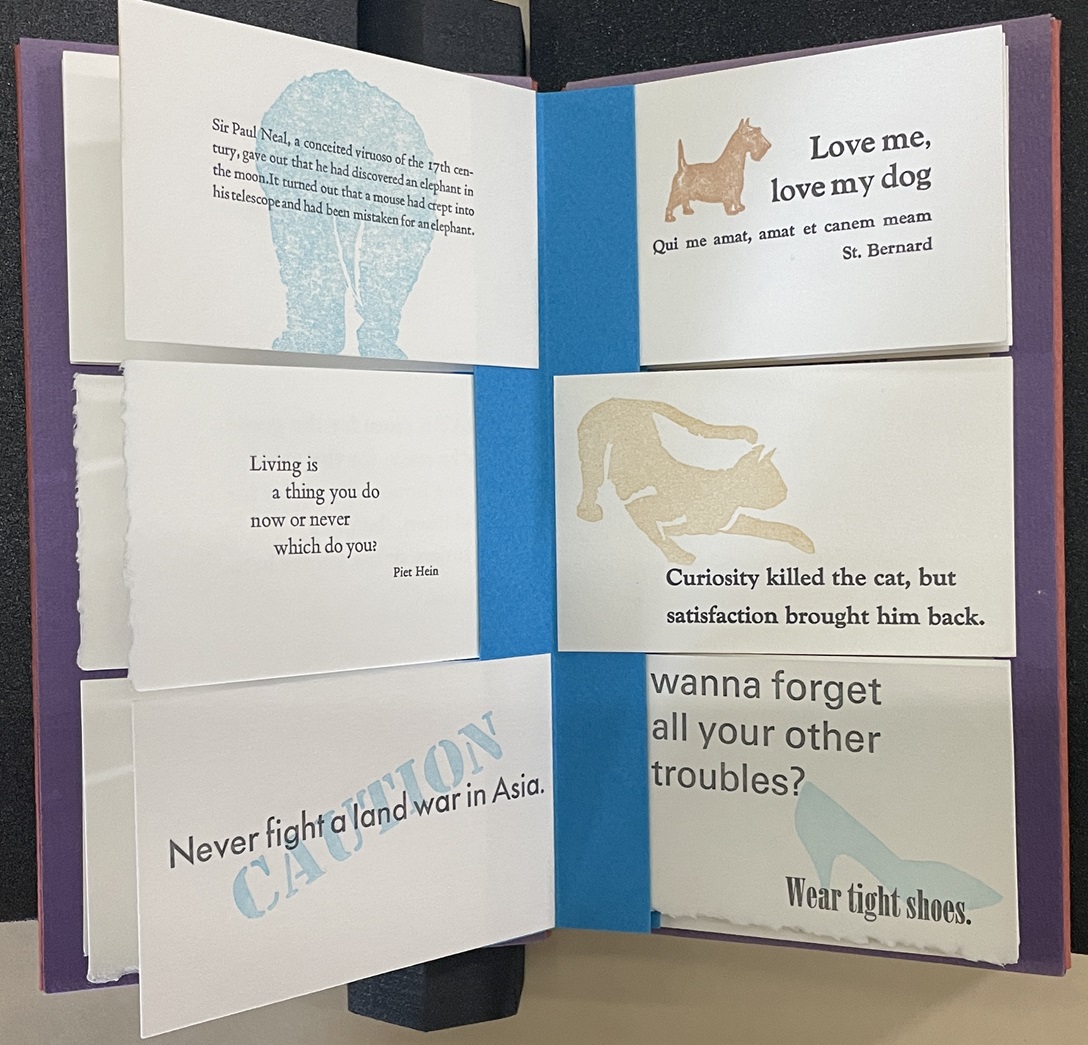
Ending this series with the Woman's Building has been very important. The previous blog posts in this series have covered works by men. Unfortunately, historical circumstances, such as lack of opportunity and cultural mores, prevented women's voices from being heard or works by women from being seen. So, it isn't easy to find finely printed books by women. As a result, women's books have not been part of this historical overview. This twofold problem ran at the crux of the Woman's Building—one, how to bring critical thinking and knowledge about past women's work, and two, how can women educate themselves to express themselves effectively in the public sphere.
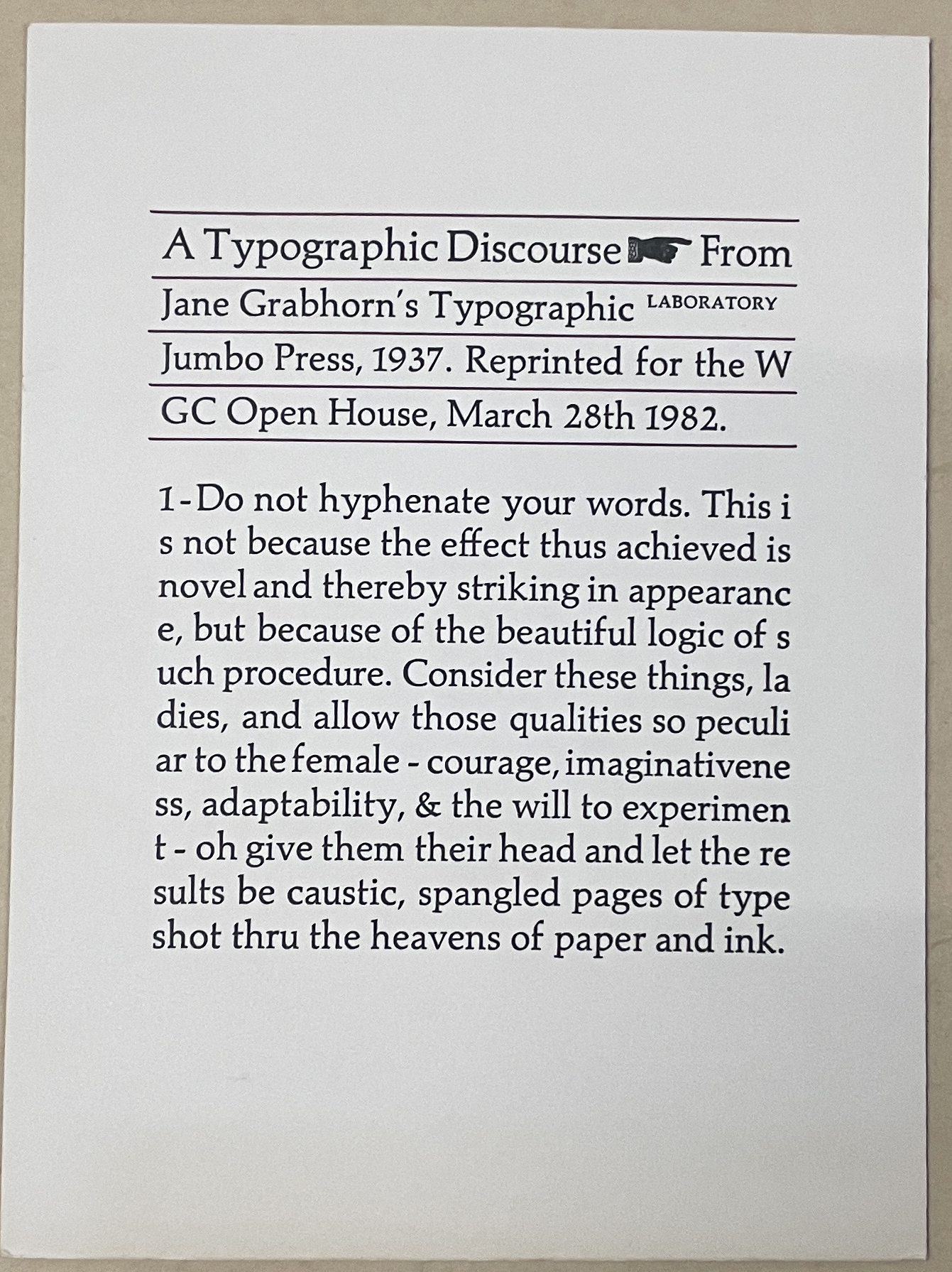
To further research beyond just the book holdings at Central Library, Special Collections has a small archival collection of printed ephemera from the Woman's Building's heyday. Archives collect materials from individuals, groups, institutions, and governments that contain information of enduring value and can, especially in a case like the Woman's Building, offer first-hand primary source information using the actual materials originally created for the use by the person or group.

Being able to research and experience these physical objects allows readers to gain a deeper understanding of what people in our past found important and of value, and in this case, one can experience the folding out of a class schedule and imagine the experience of artists being able to find a safe space to learn a new craft. Technology is such that not all experiences can be fully experienced digitally, and there is still much value and pleasure in holding a book and feeling a piece of paper.

The Woman's Building had a huge impact on women artists and on feminism as a whole. It was thus incredibly supportive of multiculturalism and lesbianism and, for the printed word, created an environment supportive of printing and books through training a community of printers, artisans, and book artists in Los Angeles. Many trained at the WGC started their studios elsewhere; some even taught at local institutions, and others started their printing businesses. Some of these people later became teachers and professors throughout the Southland, such as Otis, CalArts, Scripps College, Armory Center of the Arts, etc.

As always, these books and this archival collection are all easily accessible and can be seen in person with a visit to the Central Library. If the book (or the archival collection) is held in Special Collections, an appointment can be made to see these items by using this online form. For a listing of archival collections that are held here in Special Collections and can be seen using the above form, check out the Online Archive of California's list here.

To learn more about the Woman's Building and the work done there, check out the following books:
- The First Decade: Celebrating the Tenth Anniversary of the Woman's Building
- Woman’s Building & Feminist Art Education 1973-1991: A Pictorial Herstory
- Insurgent Muse: Life and Art at the Woman's Building
The following is a small sampling of the books that artists who were active in the Woman's Building:
